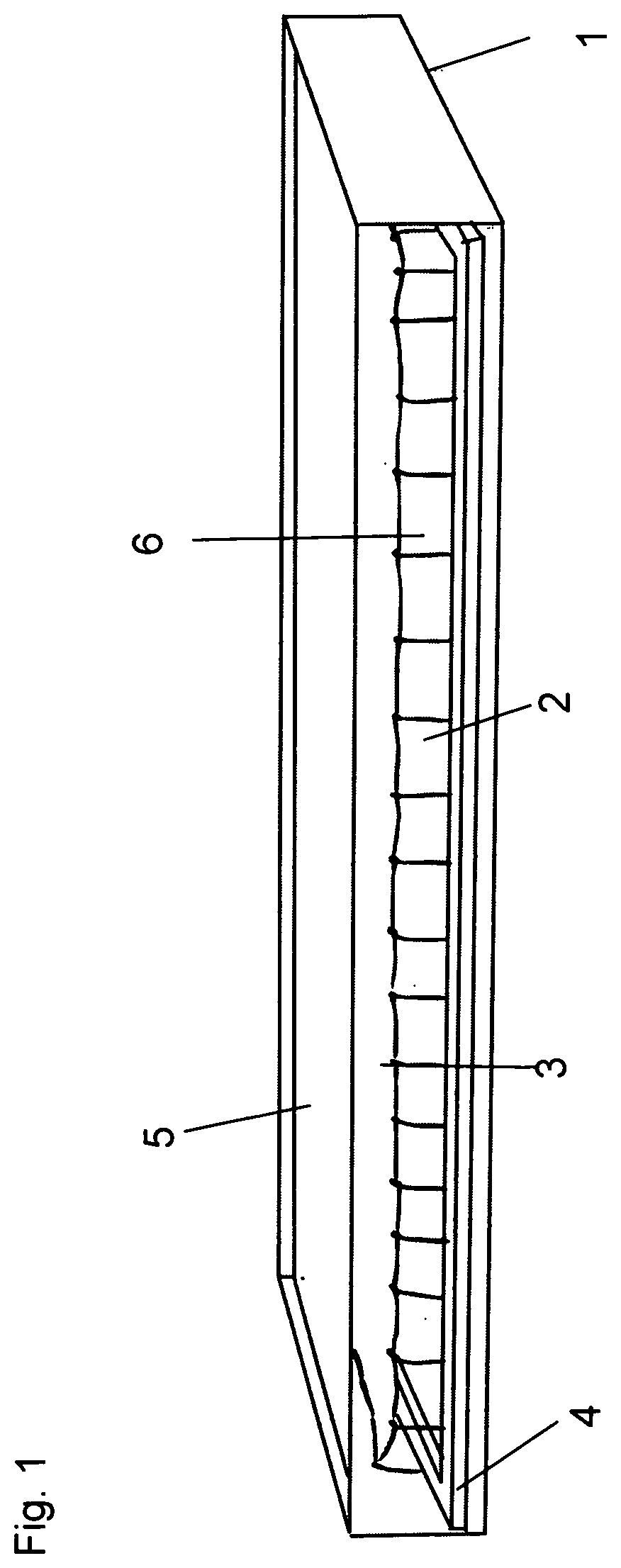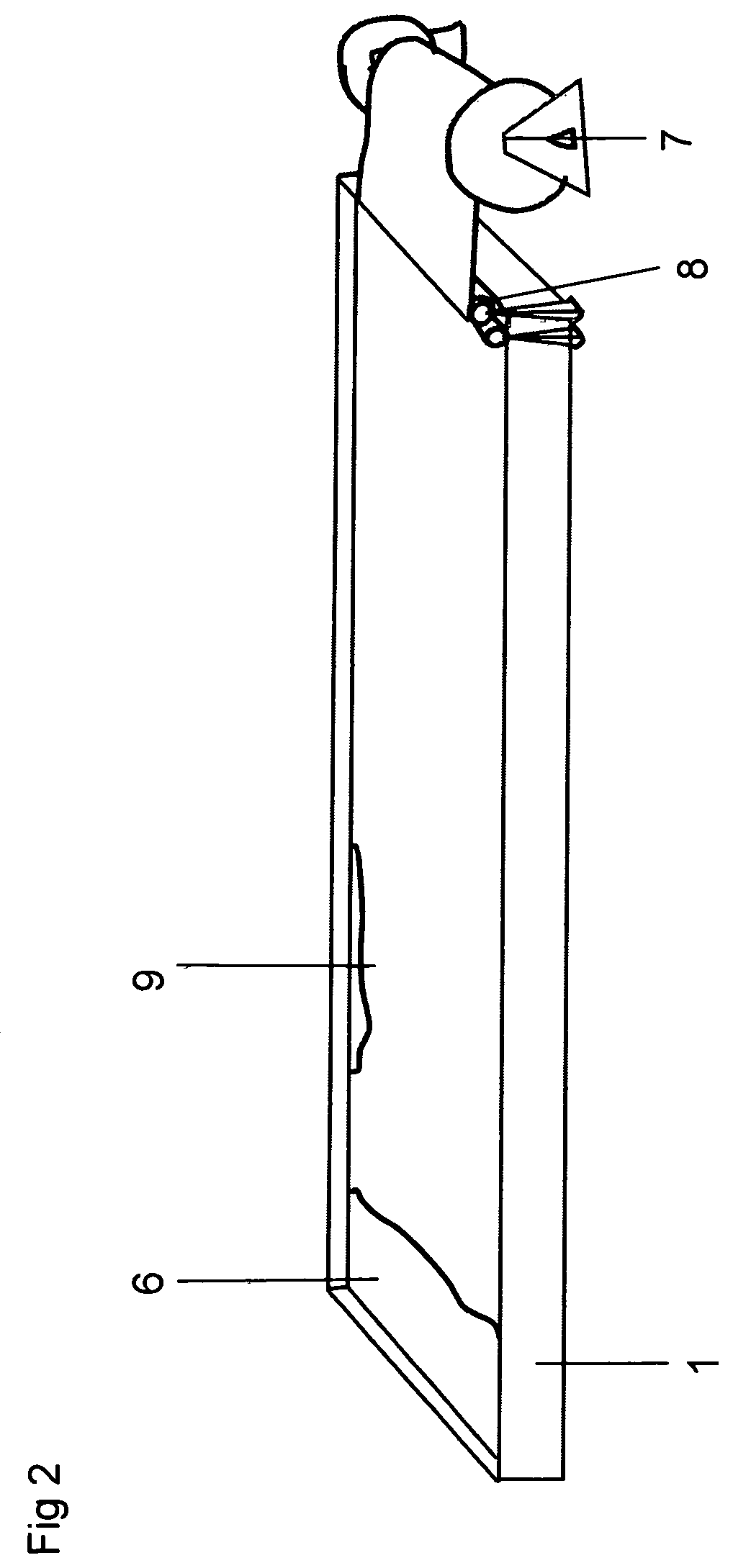Method of Producing High-Strength Composite Sheet Composed of Fiber-Reinforced Grown Biological Matrix
- Summary
- Abstract
- Description
- Claims
- Application Information
AI Technical Summary
Benefits of technology
Problems solved by technology
Method used
Image
Examples
Embodiment Construction
[0021]FIG. 1 shows a tank 1 filled with a nutrient solution and cell culture 6, with a biological film 5 growing near the surface, with fibers 3 stretched on a frame 4 using hooks 2 to maintain the tension of the fiber reinforcement. Because it is under tension, the resulting sheet will have low strain (will not dramatically stretch under load).
[0022]Fibers can be spun into thicker ropes with most of the fiber in the axial direction and fewer across to create structural material with strength mostly in the axial direction.
[0023]Fiber reinforcement can be woven using a loom with varying spacing of fibers in both warp and weft directions to precisely control strength in a plane. Fiber can be knit, creating loops that can stretch and absorb impact. Fiber can be crocheted, using only one strand, to create a structure that is three dimensional allowing connections between layers via the stronger fibers rather than only the dried cell material. This should make the material more resistant...
PUM
| Property | Measurement | Unit |
|---|---|---|
| Electrical conductivity | aaaaa | aaaaa |
| Concentration | aaaaa | aaaaa |
| Density | aaaaa | aaaaa |
Abstract
Description
Claims
Application Information
 Login to view more
Login to view more - R&D Engineer
- R&D Manager
- IP Professional
- Industry Leading Data Capabilities
- Powerful AI technology
- Patent DNA Extraction
Browse by: Latest US Patents, China's latest patents, Technical Efficacy Thesaurus, Application Domain, Technology Topic.
© 2024 PatSnap. All rights reserved.Legal|Privacy policy|Modern Slavery Act Transparency Statement|Sitemap



